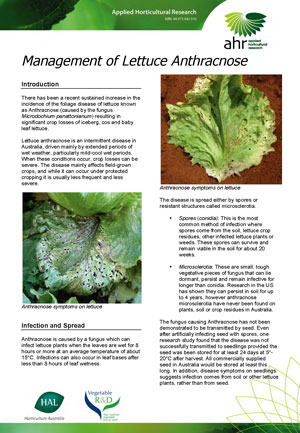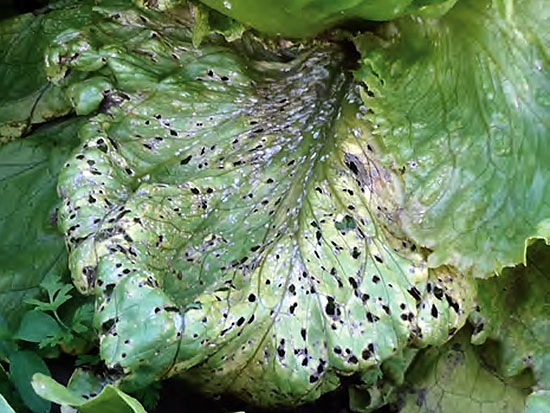|
|
Lettuce anthracnose is an intermittent disease in Australia, driven mainly by extended periods of wet weather, particularly mild-cool wet periods. When these conditions occur, crop losses can be severe. The disease mainly affects field-grown crops, and while it can occur under protected cropping it is usually less frequent and less severe. There has been a recent sustained increase in the incidence of the foliage disease of lettuce known as Anthracnose (caused by the fungus Microdochium panattonianum) resulting in significant crop losses of iceberg, cos and baby leaf lettuce. This 4-page information brochure discusses the sources of disease infection and spread and identifies a range of cultural and chemical controls.
Cultural control methods include :
Other discussion includes :
Disclaimer : Any recommendations contained in this publication do not necessarily represent current Horticulture Australia policy. No person should act on the basis of the contents of this publication, whether as to matters of fact or opinion or other content, without first obtaining specific, independent professional advice of the matters set out in this publication. Acknowledgments : This best practice guide is an output of HAL project VG10123 and has been funded by HAL using the vegetable levy and matched funds from the Australian Government. See Also : |
|


